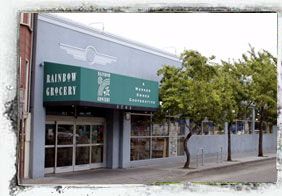


As part of a worker-run cooperative, we are more than simply the labor-force of the company, we are the company. And while we have come to Rainbow for many different reasons, we all share the desire to work in a democratic place where everyone's opinion matters. Not only do we hope to make a difference by providing healthy food and products, we believe that through our successful business model for cooperative work we have put the ideals of sustainable living into practice.
Since we moved from 15th and Mission to our new building at 13th and Folsom, we have more than doubled our workforce from about 85 people to over 200. While we add new workers every year, some of us are celebrating our 15th, 20th, even 25 year anniversaries! With such a wide range of experience and lifestyles represented among us, we offer each other many different perspectives and attitudes.
Structure
In many ways Rainbow runs as if it were a union between several smaller individual cooperatives: our departments. Membership in the department in which you work is essential for Membership in the store and most day-to-day decisions such as hiring, scheduling, buying are made at a department level. We have 14 departments, some represent sales categories such as Produce, Bulk, Cheese, Bakery and Refrigerated. Others are support departments such as Cashiers, Maintenance and the Office.
The Board of Directors
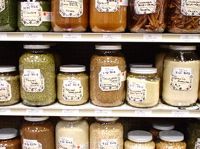 Legal and financial decisions are made by our Board of Directors, which is elected annually from the Membership. Anyone who is a Corporate Member is eligible to run for the Board of Directors. Unlike traditional corporations where the Board of Directors is a powerful body of individuals who may be out of touch with the bottom rungs of the hierarchy, our Board Members can be the same people who stock shelves, clean the floors and work the registers. Our seven-member Board handles requests for large financial expenditures, reviews the department income statements and deals with outside contracts and legal issues. The Board also has the power to create policies for the store, some of which must be ratified by the Membership at large.
Legal and financial decisions are made by our Board of Directors, which is elected annually from the Membership. Anyone who is a Corporate Member is eligible to run for the Board of Directors. Unlike traditional corporations where the Board of Directors is a powerful body of individuals who may be out of touch with the bottom rungs of the hierarchy, our Board Members can be the same people who stock shelves, clean the floors and work the registers. Our seven-member Board handles requests for large financial expenditures, reviews the department income statements and deals with outside contracts and legal issues. The Board also has the power to create policies for the store, some of which must be ratified by the Membership at large.
Storewide Steering Committee
Another elected body, the Storewide Steering Committee, coordinates and deals with matters that cannot be handled successfully by a single department. The seven-member body meets weekly to deal with departmental conflicts, questions about floor-policy, and other day-to-day issues.
Membership Decisions
The most important decision-making body of all is the Membership. Simply stated, anyone who is a member/owner can make decisions at our monthly Membership meetings. Certain types of policies that affect wages and benefits, major changes in store operations, and a few other issues must be voted on by the Membership. We have guidelines for the way proposals for policies must be drawn up and explained. But at a meeting that can have anywhere from 30 to 80 or more people, it's important for the meetings to run smoothly.
 Membership Requirements
Membership Requirements
We expect anyone who works at Rainbow to become a member. However, it can be a rigorous process. We require that workers complete a set amount of hours as well as attend a number of financial, historical, safety and customer service orientations. Workers must also attend meetings of decision-making bodies and pass a test in order to complete their membership requirements. Once you've jumped through all these hoops, bought your first share (a mere $10!) you're a Member. You can now run for committees, vote at Membership Meetings and share in the financial surplus after taxes are paid. Despite the rigorous process, most workers become members during their first year.
The Rewards
The essence of what is so rewarding about working at Rainbow is that each member has a voice in the way we operate. We may not always agree on how to solve a problem, but everyone has the chance to formulate policies, create committees, propose new ideas or effect change. We are a constantly changing organization and are always learning new ways to do things.
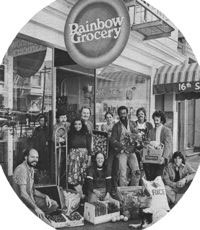 |
The first years |
History
Rainbow Grocery has a long and rich history. We've lived in three locations, survived the demise of the People's Food System and still have workers who joined us when we were a volunteer organization. Through it all, we've developed into a strong and diverse organization, which is owned and operated solely by its workers.
The origins of Rainbow
Although it quickly became a secular project, Rainbow Grocery was started by a spiritual community, an ashram that existed in San Francisco in the early 1970s. In order to have access to inexpensive, vegetarian, "pure" foods, the ashram had a bulk food-buying program. The buying program was coordinated by Rich Israel, an ashram member who happened to work for the People's Common Operating Warehouse of San Francisco, a political project using food distribution as a form of community organizing and political education. The People's Warehouse was striving to build a "People's Food System," including a network of small community food stores throughout San Francisco. Rich helped convince the ashram to launch a community food store.
When Rainbow opened in summer 1975, the People's Food System already had two stores: Seeds of Life, in the lower Mission, and Noe Valley Community Store. The ashram members who organized the opening of Rainbow Grocery Rich Israel, Janet Crolius, Bill Crolius, and John David Williams did so largely by studying and copying the operations of the Noe Valley store.
Around that time, many other community food stores opened, including: Community Corners (Bernal Heights), Noe Valley Community Store, Haight Community Store, Inner Sunset Community Store, Other Avenues Cooperative (Outer Sunset), The Good Life Grocery (Potrero Hill), Flatland Community Store (Berkeley), Ma Revolution (Berkeley), The New Oakland Community Store and Rainbow Grocery (The Mission).

Precita Eyes Muralists Association, 1996 - Painted mural created in honor of the rural work
The first Rainbow store was located on 16th Street near Valencia (where Café Macondo now resides), on what was then considered a "skid row." Despite the rundown nature of the street, Rainbow's location turned out to be auspicious as it was close to many neighborhoods populated by counterculture youth. Rainbow quickly became the busiest of the dozen or so community food stores launched in the mid-70s. Besides being in a favorable location, Rainbow's founders have pointed to the following factors to explain its preeminent performance among the Food System stores:
-
Service-orientation: as an outgrowth of their spiritual community, the ashram members viewed Rainbow as an outlet and opportunity for service to their fellow humans. Many of the more politically-motivated food stores had a disregard or even hostile attitude towards customer service. Even though Rainbow quickly grew to have a majority of workers/volunteers from outside the spiritual community, it retained a greater commitment to service than other stores.
-
Attention to business: While some of the other stores did not value business skills or were even suspicious of people attentive to business concerns Rainbow valued and followed initiatives from those with business skills and/or backgrounds (in the first few years, particularly Bill Crolius, Nancy Crolius, Ryan Sarnataro, Patrick Smith, and Judy Brewer).
-
Superior product selection: Perhaps as a by-product of its commitment to service and its concern for business, Rainbow developed a wide selection of products - whereas other stores were slow to move beyond bins of whole grains, etc. Rainbow was eager to introduce shoppers to a wide variety of healthy products they might enjoy rather than operating from strict ideological criteria about what people should eat.
Rainbow opened with exclusively volunteer labor. After the first few months, there was enough income to pay the project's two most active workers (its de facto coordinators) something approximating minimum wage. As the store became increasingly successful, it was able to bring more workers on paid staff, although people were generally not brought on to payroll until after several months of consistent volunteering. As the staff at Rainbow grew larger and more culturally diverse, the need for more defined organizational relationships increased.
A business blossoms
For the purpose of simplicity, Rainbow was started under the legal ownership of founders Janet and Bill Crolius. What this meant primarily is that Bill & Janet were responsible for reporting Rainbow's operations on their tax forms and were on the hook for any debts or lawsuits, even though the store operated collectively; so they transferred ownership in 1976, to a nonprofit corporation. When incorporating, Rainbow workers simply adapted the corporate documents of the People's Warehouse, which included the Warehouse's statement of six political principles underlying the Food System. Including the six principles was done, in part, as an attempt to appease the Warehouse's activists who thought Rainbow was not political enough. Copying from the Warehouse's incorporation documents also simplified the legal work; unfortunately, the Warehouse's legal model was not very appropriate or functional. The Warehouse had written up their incorporation documents with the hopes of obtaining tax-exempt charitable status, which they were unable to do. While Rainbow's workers already knew Rainbow would not qualify as a tax-exempt charity, they still incorporated using the nonprofit model of the Warehouse.
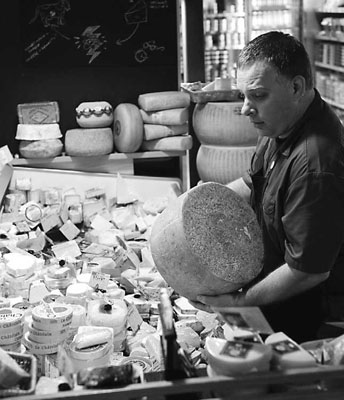
Growth in the Early Years
As it happened, Rainbow started generating financial surpluses soon after incorporating as a nonprofit. In order to avoid generating a taxable profit, Rainbow distributed its financial surplus through (a) increasing the compensation of its workers (through bonuses) and (b) reinvesting money in Rainbow to fuel expansion. Rainbow's first substantial expansion, in 1978, was the opening of a general store (selling vitamins, dry goods, housewares, books, clothing etc.) a few doors down from the grocery store. It was contemplated that selling such items as vitamins and supplements would considerably boost Rainbow's financial surplus since these items have a higher mark-up than food items. Contrary to expectations, the general store initially ran at a considerable loss and became a significant financial drain on the grocery store. The eventual turnaround through which the General Store became Rainbow's financial engine as originally anticipated has been attributed to two factors:
-
moving vitamins away from the door, where they could not be so easily shoplifted (the days of hippy trust and goodwill were evaporating) and
-
improvement in pricing and buying skills, particularly with the bringing on of buyers Dennis Wagner and Ryan Sarnataro who introduced such practices as going to trade shows, and taking inventory.

Breakdown of the People's Warehouse
Meanwhile, the People's Food System was becoming increasingly politicized and polarized. The various food collectives had been meeting in the system's Common Operating Warehouse. The group of representatives meeting was called the "representative body" or RB. The members of the RB were torn between paying attention to food politics and collective food stores as a revolutionary act vs. using the energy of the Food System to participate in the broader counterculture movement of the time.
In addition, the adoption of a representative democracy was somewhat at odds with the collective/consensus process of many of the stores. Finally, the RB elected a steering Committee to organize and facilitate its regular meetings. This committee in turn drafted a "Principles of Unity" statement to which member stores had to ascribe in order that they might retain their membership in the Food System. At this point, the members of the Rainbow Collective opted to go it on their own, preferring to focus on the issue of food and food access as right livelihood. It turns out that this decision was a smart one.
The Warehouse increasingly became embroiled in political infighting which took on a violent character when, as part of its political program, the Warehouse began actively recruiting recently-released prisoners for its workers. Unfortunately it recruited members of rival gangs, which engaged in a gunfight at the warehouse. The final blow to the Warehouse came in 1981 when a flood destroyed much of its stock. There is some speculation that the demise of the food system could have been facilitated by infiltration and undermining on the part of members of government agents involved with Cointelpro. This however, has not been proven.
 |
the move to Mission St. |
The Move to 15th and Mission
In the meantime, the Rainbow Grocery and, particularly, General Store divisions had continued to grow. Indeed they had outgrown the confines of their 2,000 square foot storefront on 16th Street. In 1983, Rainbow moved to a 9000 square foot space on 15th and Mission. Business jumped 68% in the first year at the new site. With this influx of money, workers were able to give themselves their first substantial raise and obtain group health insurance. Another advantage of the move was that it allowed the Grocery and General Store divisions to share the same building, which promoted cultural cohesion. Yet, each division retained it own cash register system, policies, organizational structure, etc. There were even rules restricting workers from being in both collectives at the same time. People got around those rules, of course, but there was little inter-divisional, even little interdepartmental working in that period. Another significant organizational development made in preparation for the move was creation of a Board of Directors, who met regularly beginning in 1982. Prior to 1982, all decisions were made in "Joint Meetings" of all workers from the Grocery and General Store divisions.
Design and construction of the Mission & 15th store was financed primarily with approximately $250,000 in customer loans. Rainbow needed to turn to its customers for financing in part because banks would not lend to a worker collective legally-organized along the lines of a charitable nonprofit; bankers would always ask "but who really owns the business?" Thus, when overcrowding inspired Rainbow to look again for a larger space, the collective acted to re-form as a cooperative corporation (a legal form that did not exist when, in 1976, Rainbow originally incorporated). The change in legal form, accomplished in 1993, finally allowed Rainbow to provide bankers with an answer they could, if not like, at least understand: Rainbow is owned by its shareholders, which are its workers."
For several years Rainbow enjoyed the position of being one of the largest health food stores in the Bay Area. In addition, the dedication and commitment of Rainbow workers was instrumental in establishing some of the earliest standards for Organic Certification as well as in marketing more bulk foods than any other store and selling a wider variety of herbs and supplements.
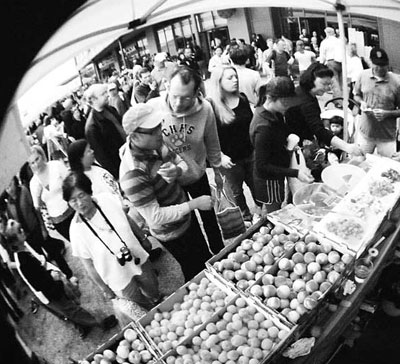
On to Folsom Street
It was not long before the Mission Street store outgrew itself. Even by 1988, customers and workers were literally climbing over each other to get to products in the store. It was also at this time that stores like Real Foods, Living Foods and Whole Foods were opening around the Bay Area. These spacious, well-lit, clean markets began to influence the way the shopping public perceived health food stores. No longer was the do-it-yourself "hippie collective" the standard model. Shoppers' expectations were formed on their experiences elsewhere. As Rainbow approached the end of its 10-year lease, it was more and more apparent that the space at Mission and 15th was not adequate. In 1992 the store decided to begin looking for a new space. It was four years in the making - locating a space, negotiating a lease, coming up with a design, and finishing construction.
One major factor that helped Rainbow in its move to Folsom Street was the ability to get a bank loan ($1 million from First National) with backing from the city government. The city backed (guaranteed) the bank loan in part because Rainbow would be creating jobs and in part because Rainbow was moving into a then economically-depressed neighborhood, an Enterprise Zone designated for economic development funding. The city also lent Rainbow $400,000 in addition to backing the bank loan.
In order to carry off the planning for and the growth involved in the move, Rainbow undertook further organizational refinement. As part of the move, the Grocery and General Store divisions were dissolved and Rainbow divided into Departments as its basic units; Joint Meetings between the divisions were replaced by Membership Meetings. The Membership Meeting created a Storewide Steering Committee to help coordinate the Departments and overall day-to-day operations hoping to free the Board to focus on the larger financial/legal issues and long-term planning.
All the planning and hard work came to fruition with our opening at Folsom Street on April 25, 1996. As with the previous move, sales skyrocketed (this time 55% in one year). And, the financial success allowed a substantial increase in wages and benefits, and "patronage" distributions in keeping with our new cooperative legal structure. The work force, hovering around 100 workers in the final years at Mission Street, doubled in a couple years following the move. The rapid addition of new members to our community made it all the more important that we preserve and pass on our history - so that we appreciate what came before us and so that we can move forward from a common understanding.
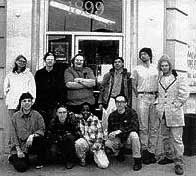 |
Workers at Mission Street |
The Health Food Industry Today
The makeup of stores with similar origins in the Bay Area has changed. Interestingly, the natural foods business has become a competitive industry, one that strongly mimics the industrial agribusiness complex against which many of the first community food stores rebelled. Of the other stores from the People's Food System only Other Avenues remains. Noe Valley Community Store and the Inner Sunset Community Store are the most recent to have closed. The Good Life Grocery survives as a privately owned business as does People's Refrigeration and Veritable Vegetable (a distribution warehouse). In April of 1997, Uprisings Bakery closed its doors, sadly signaling an end to an era of locally and independently produced food.
Rainbow's place in this new agribusiness is at times uncomfortable and challenging. We strive to compete with giant chains who falsely mimic our collective structure with "teams and team leaders," although they still maintain oppressive hierarchical structures in the workplace. We are constantly forced to examine the products we buy as smaller local businesses are swallowed up by multinational corporations who may not have the same values as the original owners. With health food becoming part of our national awareness, the lines between "healthy" and "unhealthy" are not so clearly drawn. Herbal remedies are now being mass-produced and sold in pharmacy chains like Walgreens and Rite-Aid, instead of wildcrafted in local regions. Soymilk can now even be found at many local corner stores that typically used to only sell chips, beer and beef jerky. (The opposite is also now true, for unlike in the old days, you can find chips, beer and (vegi) jerky on our shelves.) With the advent of Genetically Modified foods and the lack of government requirements when it comes to testing and labeling, we face even more challenges. And occasionally, certain government organizations decide they want to change organic standards to include practices that we abhor.
Despite these challenges there are enough people who are interested in organically grown and locally produced foods to keep our doors open. We continue to stay true to our mission and hope to inspire others in the realms of good food and cooperative living.
Text and photos www.rainbow.coop
| |
|
Cooperative structure
Rainbow Grocery Co-op, founded as a collective in 1975, has been a worker-owned cooperative since 1993.
Self-Managed Work Teams
The majority of work is done here in what some call self-managed work teams: groups of people who agree to work together on a project or ongoing responsibility. Some duties that are not taken care of by hired positions are taken care of by other elected committees. Annually, we elect new members to our PR, Donations, Grants, Ecology, Security and Effective Meetings Committees. These groups redefine their goals each year and request a budget from the Board. Throughout the year they take care of various responsibilities and meet with the Board from time to time to report on their progress.
Sometimes we have random responsibilities that are taken care of on a volunteer basis. Most of our work is done here with the attitude that you take on extra tasks outside of your job description, because you want to, not because there are supervisors to make you.
|
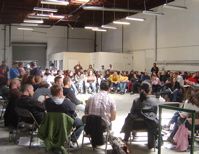 |
|


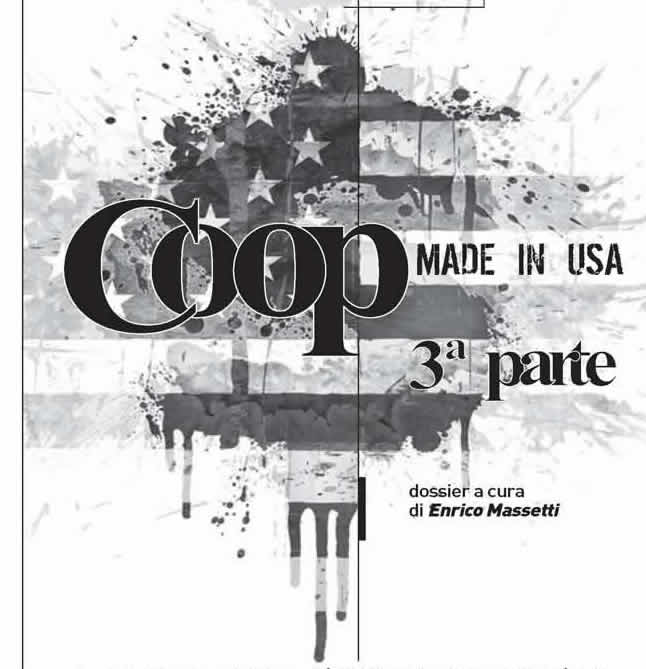




 Legal and financial decisions are made by our Board of Directors, which is elected annually from the Membership. Anyone who is a Corporate Member is eligible to run for the Board of Directors. Unlike traditional corporations where the Board of Directors is a powerful body of individuals who may be out of touch with the bottom rungs of the hierarchy, our Board Members can be the same people who stock shelves, clean the floors and work the registers. Our seven-member Board handles requests for large financial expenditures, reviews the department income statements and deals with outside contracts and legal issues. The Board also has the power to create policies for the store, some of which must be ratified by the Membership at large.
Legal and financial decisions are made by our Board of Directors, which is elected annually from the Membership. Anyone who is a Corporate Member is eligible to run for the Board of Directors. Unlike traditional corporations where the Board of Directors is a powerful body of individuals who may be out of touch with the bottom rungs of the hierarchy, our Board Members can be the same people who stock shelves, clean the floors and work the registers. Our seven-member Board handles requests for large financial expenditures, reviews the department income statements and deals with outside contracts and legal issues. The Board also has the power to create policies for the store, some of which must be ratified by the Membership at large. Membership Requirements
Membership Requirements




